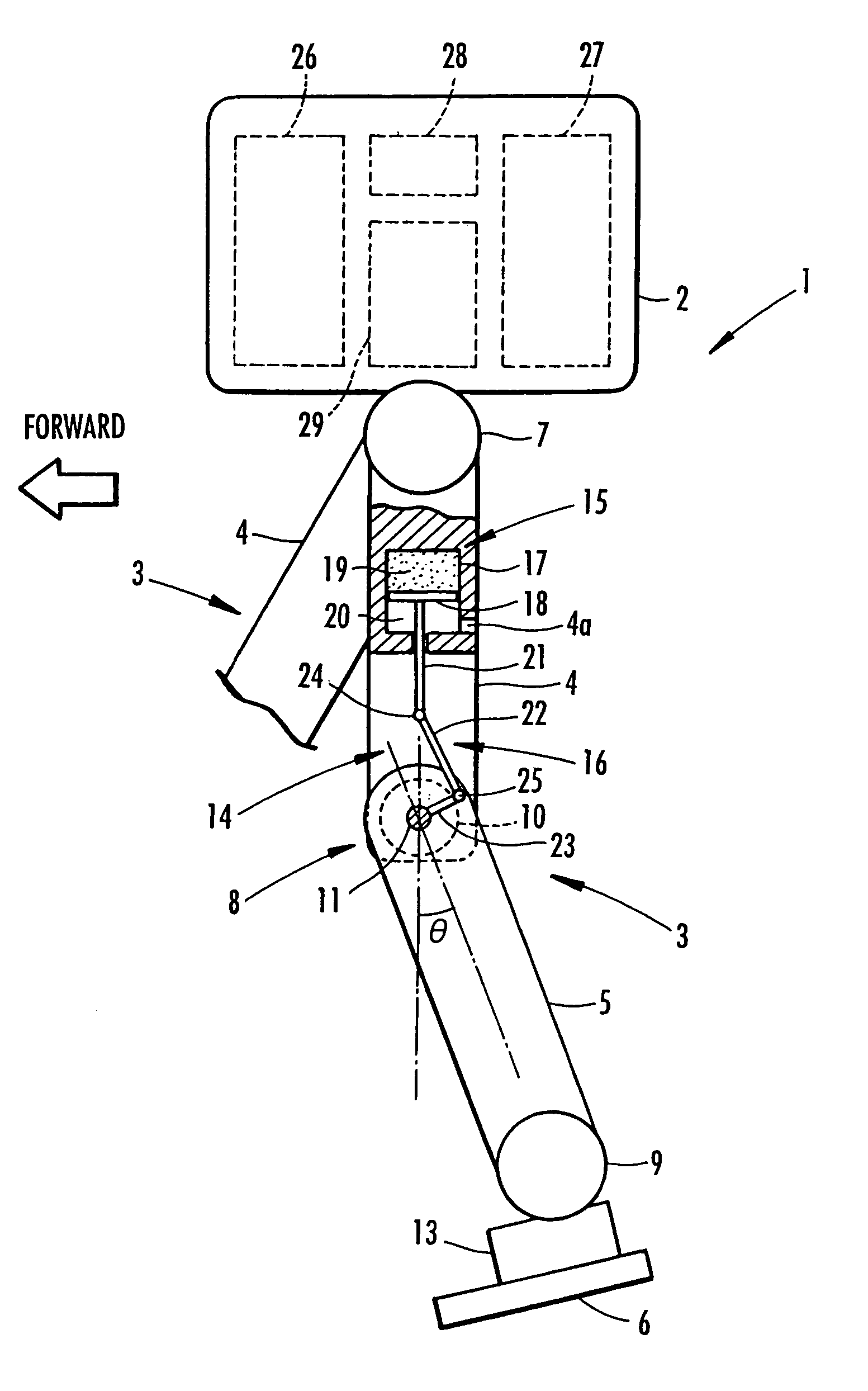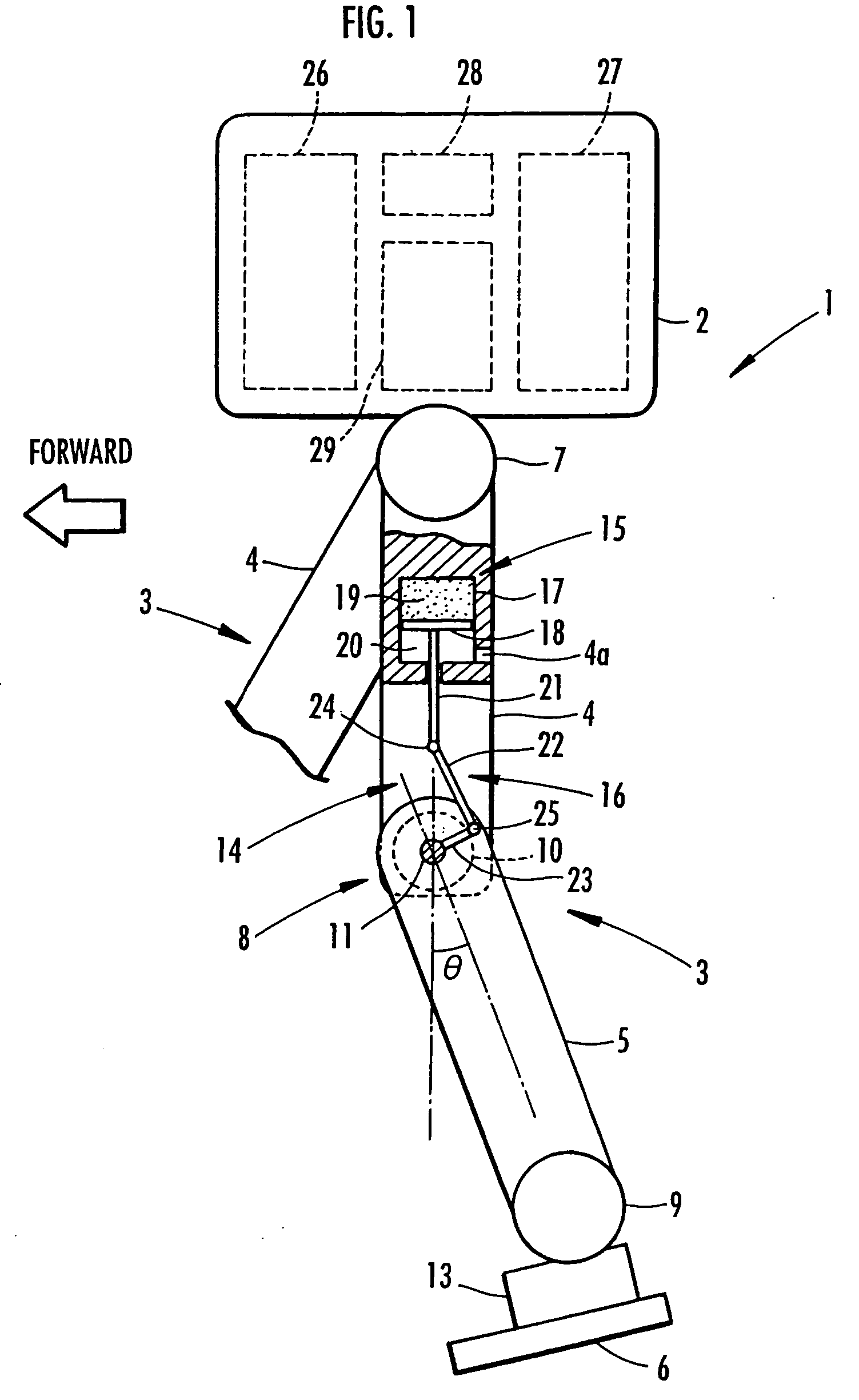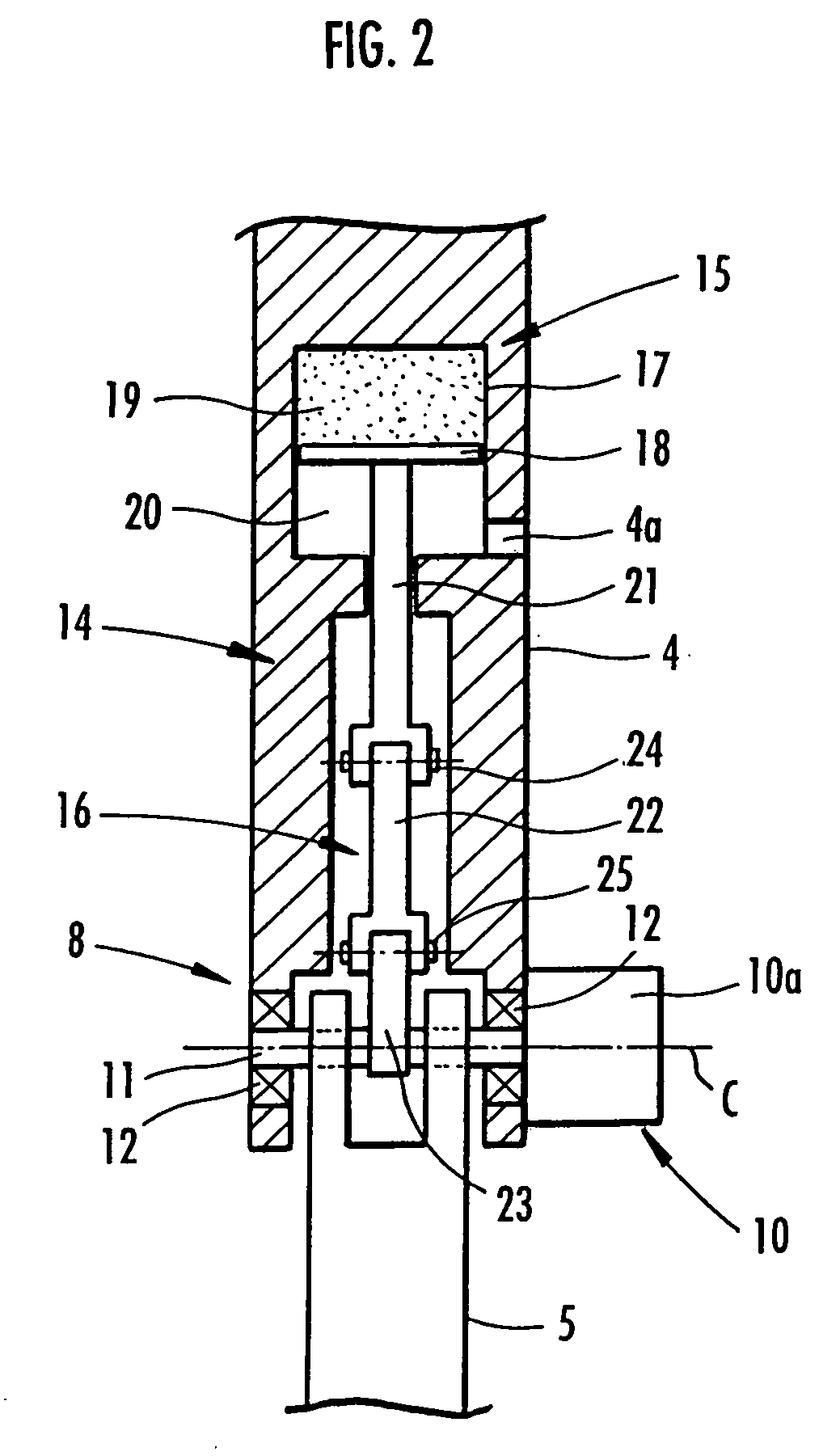Leg joint assist device for legged movable robot
a technology for moving robots and legs, which is applied in the direction of mechanical control devices, process and machine control, instruments, etc., can solve the problems of large size and weight of electric motors, excessive energy loss owing to joule heat or the like, and large driving force to be generated to joint actuators to resist forces
- Summary
- Abstract
- Description
- Claims
- Application Information
AI Technical Summary
Benefits of technology
Problems solved by technology
Method used
Image
Examples
first embodiment
[0032]the present invention is described with reference to FIGS. 1 to 7. FIG. 1 is a schematic view depicting the configuration of a biped mobile robot serving as the legged mobile robot of this embodiment. As illustrated, the robot 1 is provided with two legs 3 and 3 extending downward from a body 2. Note that these legs 3 and 3 as well as later-described assist devices included therein have the same structure and thus one of the legs 3 (the forward-right leg 3 of the robot 1 in the figure) is shown only partially.
[0033]Similar to a leg of a human, each leg 3 is configured by sequentially connecting a thigh portion 4, a crus portion 5, and a foot portion 6 through a hip joint 7, a knee joint 8, and an ankle joint 9, respectively, from the body 2. To be more specific, the thigh portion 4 of each leg 3 extends from the body 2 through the hip joint 7, the crus portion 5 is connected to the thigh portion 4 through the knee joint 8, and the foot portion 6 is connected to the crus portio...
third embodiment
[0089]In this case, as shown by a solid line in FIG. 11, the cam surface of the cam 38′ is formed so that the auxiliary knee rotation force of the spring means 36 becomes the largest (maximum) in the stretching direction of the leg 3 at a predetermined angle θy1 which is smaller than the piston top dead center angle θx1 at which the auxiliary knee rotation force of the spring means 36 becomes “0”, and slightly larger than the foregoing supporting leg period maximum knee bending angle θa. In other words, the cam surface of the cam 38′ is formed as follows: when the knee bending angle θ is smaller than the aforementioned predetermined angle θy1 (hereinafter, referred to as a maximum auxiliary force angle θy1), the auxiliary knee rotation force of the spring means 36 increases in the stretching direction of the leg 3 as the knee bending angle θ increases; and, when the knee bending angle θ is larger than the maximum auxiliary force angle θy1, the auxiliary knee rotation force in the st...
fourth embodiment
[0091]Note that, the following is also feasible regarding the above-described In a case where the piston top dead center angle θx1 is set larger (for example, larger than the free leg period maximum knee bending angle θb), the auxiliary knee rotation force of the spring means 36 does not change in the bending direction of the leg 3 as long as a knee bending angle θ is smaller than the free leg period maximum knee bending angle θb, even though the knee bending angle θ exceeds the maximum auxiliary force angle θy1.
[0092]Furthermore, in the case where the piston top dead center angle θx1 is set even larger, the cam surface of the cam 38′ is formed so that the radius at the point where the cam surface of the cam 38′ contacts the aforementioned roller 40 changes less acutely than the case of the foregoing fourth embodiment, relative to the knee bending angle θ. Thus, the auxiliary knee rotation force of the spring means 36 can be kept almost invariant (the auxiliary knee rotation force ...
PUM
 Login to View More
Login to View More Abstract
Description
Claims
Application Information
 Login to View More
Login to View More - R&D
- Intellectual Property
- Life Sciences
- Materials
- Tech Scout
- Unparalleled Data Quality
- Higher Quality Content
- 60% Fewer Hallucinations
Browse by: Latest US Patents, China's latest patents, Technical Efficacy Thesaurus, Application Domain, Technology Topic, Popular Technical Reports.
© 2025 PatSnap. All rights reserved.Legal|Privacy policy|Modern Slavery Act Transparency Statement|Sitemap|About US| Contact US: help@patsnap.com



